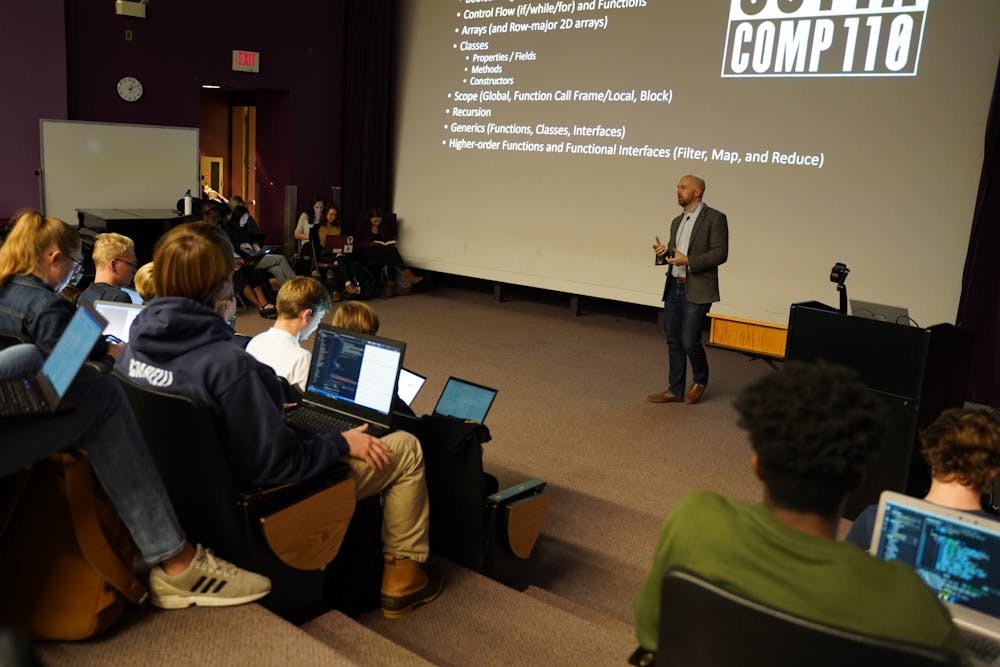Over the past decade, UNC’s classroom environments have majorly shifted to align with the advancement of technology — namely moving away from traditional lectures and instead incorporating technology.
“One of the biggest changes we’re seeing is a move toward an active learning environment as well as classrooms which involve a flipped component,” Kris Jordan, a teaching assistant professor in the department of computer science, said. “Students are spending more time in lecture actively engaging with the material as opposed to passively ingesting it.”
Jordan, who graduated from UNC in 2007 and later returned as a faculty member, said students have been able to better master material and feel more engaged with course content through the use of technological advances such as clickers and digital response systems like Poll Everywhere.
“What essentially technology has done is make it so the classroom is a time of focus rather than the only time of education and content delivery,” said Michael Barker, UNC’s interim vice chancellor for information technology and chief information officer. “There’s such enormous opportunity for students and faculty to interact outside of the classroom space.”
Barker said that in tandem with making classrooms into more flexible learning spaces, technological advancements have brought increased use of outside guest speakers, mobile applications and the ability to solve most tech issues remotely.
“There is an enormous ad hoc demand for connecting remote participants with live classroom sessions,” Barker said.
Chairperson of the computer science department Kevin Jeffay said his department’s rapid growth has forced it to redefine learning. He said roughly 10 years ago, there were only about 200 computer science majors. Now, he said the number is near 1,800.
“We have invested quite heavily in instructional technology — a good chunk of it we have developed ourself,” Jeffay said. “We went all in on active learning.”
Jeffay also said the recent streamlining of grading through Gradescope has made the increases in classroom sizes more manageable.




